Seborrheic Keratosis
Comprehensive Seborrheic Keratosis Treatment at the Center for Surgical Dermatology & Dermatology Associates
What is Seborrheic Keratosis?
Seborrheic Keratosis, also known as seborrheic verruca, is a common and typically benign skin growth. These growths often appear as brown, black, or yellow patches that can be flat or slightly elevated and can grow singly or in groups. Often mistaken for warts, these growths vary in color, size, and texture, prompting individuals to seek professional care for accurate diagnosis and removal. Most people will develop at least one seborrheic keratosis during their lifetime.Although seborrheic keratosis does not pose a cancer risk, understanding its distinctive appearance is crucial. These growths can resemble precancerous lesions such as actinic keratosis, so your dermatology professional may biopsy the tissue to confirm the diagnosis. Monitoring for changes and seeking dermatologic care ensures accurate identification and alleviates concerns related to these generally harmless, yet sometimes aesthetically bothersome, skin growths.
At the Center for Surgical Dermatology & Dermatology Associates, our expert team understands the cosmetic concerns associated with seborrheic keratosis, which commonly develops on sun-exposed areas. Our trusted dermatologists specialize in the evaluation and management of seborrheic keratosis, offering personalized solutions to address aesthetic concerns and ensure optimal skin health.
We provide comprehensive care that includes thorough assessments and tailored treatment plans to promote confidence and comfort in your skin. Whether you need diagnostic clarity or treatment for seborrheic keratosis, our experienced professionals are here to help. Schedule an appointment at the Center for Surgical Dermatology & Dermatology Associates today for expert care and to restore your skin’s health and appearance.
Examples of Seborrheic Keratosis


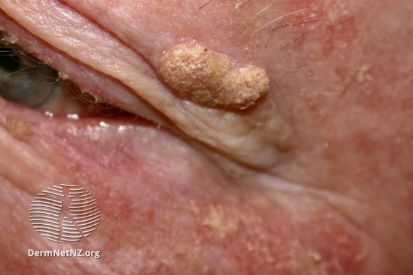
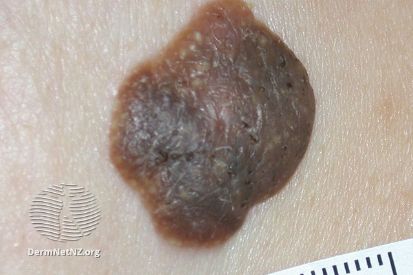
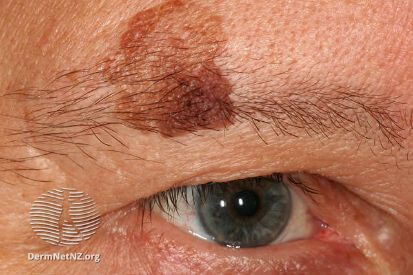
What is Seborrheic Keratosis?
- Benign growth that typically emerges in brown, black, or yellow tones.
- These lesions, singular or grouped, can appear flat or slightly elevated on the skin.
- They are commonly mistakenly identified as warts due to their resemblance.
Causes of Seborrheic Keratosis:
- Age and Genetics: Seborrheic keratosis is more common with age and tends to run in families.
- Sun Exposure: Prolonged exposure to the sun's ultraviolet (UV) rays may contribute to the development of seborrheic keratosis.
- Friction and Rubbing: Areas subject to frequent friction or rubbing, such as clothing folds, may be more prone to these growths.
- Non-Cancerous Nature: Seborrheic keratosis is a benign skin growth, not associated with cancerous changes.
How to Prevent Seborrheic Keratosis
Sun Protection: Given the potential link between sun exposure and seborrheic keratosis, protecting the skin from harmful UV rays is crucial. Regular use of sunscreen with adequate sun protection factor (SPF) and wearing protective clothing can mitigate the impact of ultraviolet radiation.
Hygiene and Skincare: Maintaining good skincare practices can be beneficial such as gentle cleansing routines, moisturizing, and regular dermatologist visits.
Genetic Awareness: Since there is a familial predisposition to seborrheic keratosis, individuals with a family history should remain vigilant. Regular skin checks and early consultation with one of our dermatologists can aid in timely detection and management.
Healthy Lifestyle: Embracing a healthy lifestyle with a balanced diet, regular exercise, and avoiding tobacco can promote overall well-being, potentially influencing skin health.
While these measures may support skin health, seborrheic keratosis remains challenging to prevent entirely, as genetic factors and aging are significant contributors. Regular at-home skin checks, annual Total Body Skin Exams, and bringing attention to any suspicious growths are crucial for early detection and treatment.
Seborrheic Keratosis FAQs
Seborrheic keratoses are generally harmless and do not turn into cancer. They are considered benign growths, and while they may look similar to certain skin cancers, they pose no cancer risk.
While genetics and aging are primary factors, excessive sun exposure may contribute to the development of seborrheic keratoses. Protecting your skin from the sun can help minimize their occurrence.
No, seborrheic keratoses do not spread to other parts of your body or to other people. Each growth is independent, and they are not contagious.
While removal is often permanent, new growths may appear over time. Regular skin checks with a dermatologist are advisable to monitor any changes and address new developments.
How to Treat Seborrheic Keratosis
If a seborrheic keratosis becomes irritated or unsightly, removal is conducted using one of these three methods:
- Cryosurgery: freezes off the growth using liquid nitrogen.
- Curettage: the dermatologist scrapes the growth off the surface of the skin.
- Electrocautery: used alone or in conjunction with curettage to burn off the tissue and stop the bleeding.
Related Blog Posts

- General Dermatology
- Skin Care
- Chronic Skin Conditions
Hormonal acne can be a pesky skin problem for many. The only way to address this is by finding a hormonal acne treatment that works for you and your unique skin.
Read More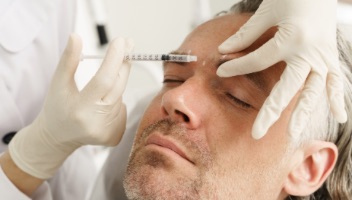
- Botox
- Injectables or Fillers
- Cosmetic Treatments
We get plenty of questions every day about the differences between BOTOX® and Dysport®, so we wanted to educate you – and set the record straight!
Read More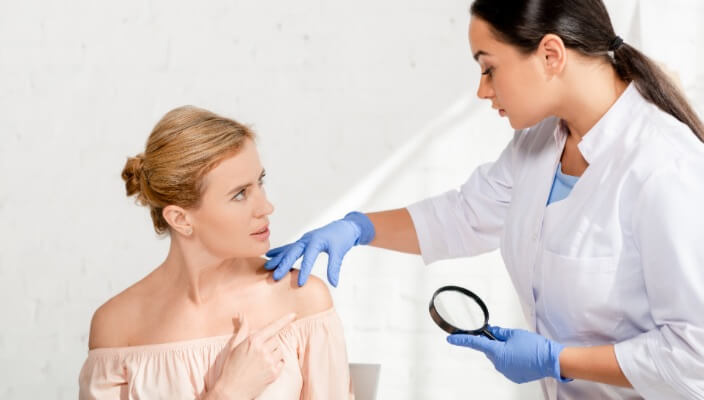
- Skin Cancer
- Skin Exams
Total Body Skin Exams (TBSEs) are crucial for healthy skin. Learn more about the importance of TBSEs and skin cancer detection.
Read MoreFeatured Products for Seborrheic Keratosis

EltaMD AM Restore Moisturizer
EltaMD AM Restore Moisturizer moisturizes while it smoothes skin texture and evens skin color and tone. This lightweight moisturizer stimulates the skin’s natural water system to moisturize without oil or heavy emollients. Hyaluronic acid helps increase moisture absorption and retention. 1.7 oz / 47 g

EltaMD UV Pure SPF 47
For those who want chemical-free active ingredients, EltaMD UV Pure is the ideal daily sunscreen. Great for children and adults, the gentle formula glides on wet or dry skin and rubs in quickly. UV Pure is formulated with purely physical active ingredients which are photostable. 4 oz / 114 g
